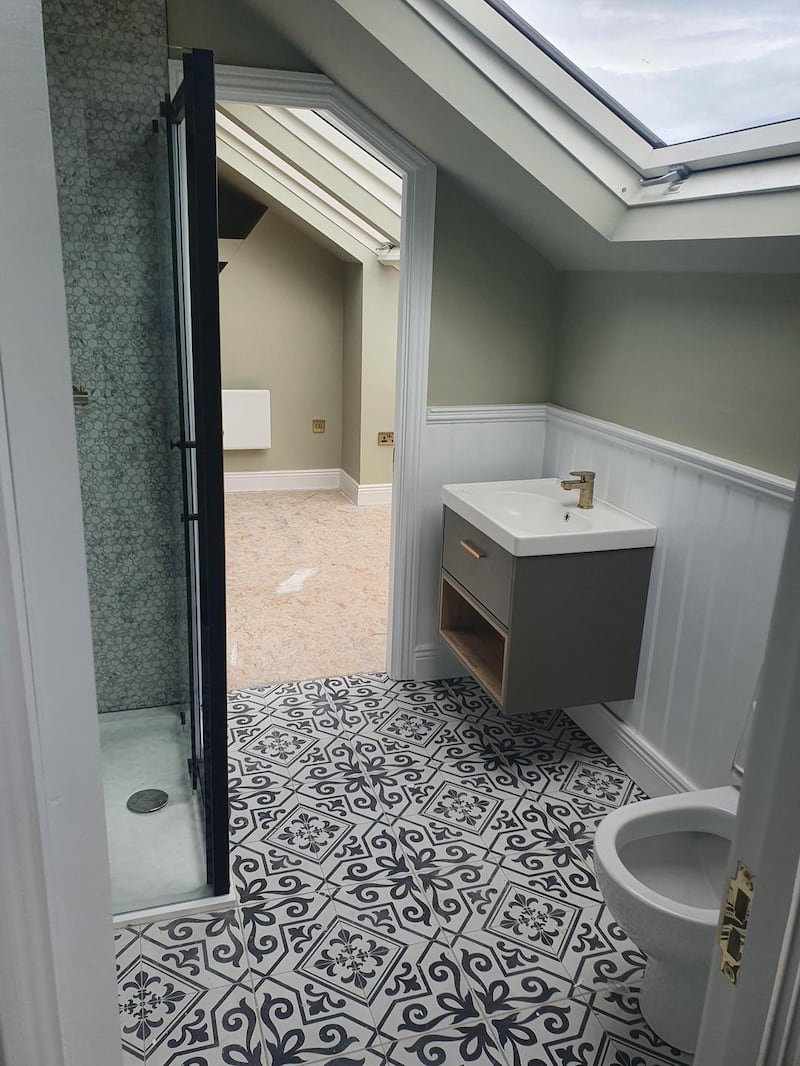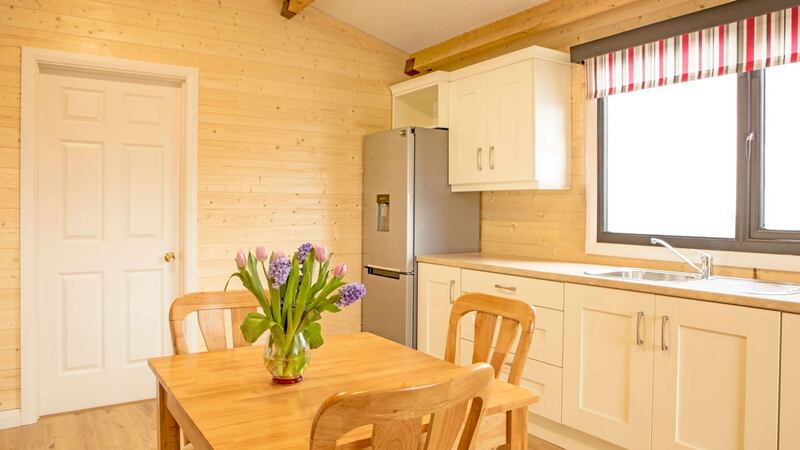Staying on in the family home when childhood ends is now common. Rising costs and poor supply of homes across the country means that many young adults just can’t afford to fly the nest.
The trouble is that many of our homes aren’t really designed for multi-generational living.
Gone are the days when the kids turned 18 and the house hollowed out. Indeed, in the decade to 2017, the jump in young Irish adults living with parents was among the highest in the EU. Some 84 per cent of Irish adults aged 18-24 live with a parent, as do 47 per cent of those aged 25-29, according to EU agency Eurofound. And that was before the pandemic.
The increase in singletons not fully leaving home until their 30s is here to stay, researchers say.
Sharing a home for up to 10 years after children grow up requires a recalibration of expectations and life plans, according to Loughborough University research. It probably requires a rejig of living space too. Conversations around responsibility, privacy and independence “can cause some anguish”, especially if the home is overcrowded, the research noted. Grown-up children having some decent space of their own can help everyone to rub along better.


Shelling out between €20,000 and €90,000 to better accommodate adult children can seem crazy – but there is something crazier. Annual rent for a one-bed apartment in the capital ranges from €15,600 in the cheapest postcode to €21,240 in more upmarket areas, according to the latest figures from Daft.ie. The average deposit needed to buy a home is now €52,500 for a first-time buyer. That’s more than double what it was a decade ago. It’s no wonder then that six in 10 of those who are employed full-time and living with their parents do so “mostly for financial reasons”, according to research from the Central Statistics Office.
So spending on your own nest, rather than watching your offspring feather someone else’s, can make financial sense.
Box clever
The room that served your child perfectly well from cradle to college may be a stretch for an adult. Grateful as they will be to have discount accommodation at home, a fully grown human will realistically need more closet space, a decent work-from-home station and probably room for the odd overnight guest. A small bedroom upstairs can be tricky to enlarge without major works.
“With the box room, the only real option for making it a bit bigger is to do a small extension,” says Cork-based quantity surveyor Karl Slyne. Of course, to add space to a first floor, you have to build out down below first. “You are going to have to pay the premium of doing the ground floor extension. You get a benefit of that to the house overall, but you won’t be long spending €100,000 fairly quick,” says Slyne.

A cheaper option can be to steal some space from the bedroom next door. Removing the partition wall between two rooms to more evenly apportion space means less structural work, but the gains will have to be worth the outlay.
“You are probably talking in the region of €20,000 because you will need an electrician, a plasterer and a painter as well as general building works,” says Slyne. His estimate includes an allowance for built-in wardrobes.
Finding a builder to do a “small” job like that these days is another matter. Plan well ahead and be prepared to shop around for value.
“Contractors are so busy we are seeing a trend where builders are charging a premium for these smaller jobs. It’s hard to get a builder to come in and do a small €30,000 or even €40,000 job. They are sort of lashing on the cost a bit because they are just so busy,” says Slyne.
Attack the attic
For more space with little fuss, converting the attic is a popular play. Providing extra space within the existing footprint of the house, you are using what you have. Going up is cheaper than building out. For adult children living, studying or working from home, their own eyrie at the top of the house brings at least some privacy. Demand is through the roof.
“I’m doing attic conversions for 20 years and we’ve always been busy, but demand has trebled in the past two years,” says Jason Flanagan of MrAttic.ie. His bread and butter are three- and four-bed semi-detached homes in Kildare and the surrounding counties. He does bungalows too. Working from home has been the big driver of demand, of course, but there is usually ample room under the eaves to do more.
Most attics have space for a double bedroom, desk and ensuite bathroom, with the private stairs creating some separation from the rest of the house, says Flanagan. Spending €25,000 excluding VAT will get you the basic, ready-to-paint rooms, excluding sanitaryware, he says. His company looks after the carpentry, plumbing, plastering and electrics. In tighter attics, a four-panelled or “quattro” window can bring a greater feeling of space.


In addition to its cheaper cost relative to an extension, the other advantage of converting your attic is that it is faster and less disruptive. “We are on site for about three weeks and you can continue to live in the house,” says Flanagan. If you anticipate needing more space for your offspring to study or work from home in a few years, or that they will boomerang back to save for deposit, plan ahead. Many specialist attic companies are now booked up to next year.
With new retrofit grants available, attics are getting more focus than ever. The SEAI offers a grant of €1,300 to insulate the attic of a semi-detached house, and €1,500 for a detached house. Clearing out the attic to insulate it may be the tipping point for your conversion job, and Slyne anticipates an increasing number of specialist retrofit companies will start to offer attic conversions too.
“I do think that they will be geared up for this sort of work and they will blitz it, probably going into an estate and getting four or five repeat houses on the back of it, and they will be quite specialised and quite quick at doing it. That has started to happen already,” he says.
To be used as a bedroom, attics must comply with fire regulations. He advises homeowners to engage an engineer or architect to ensure compliance. In addition to safety, not having the right certification will affect the saleability of your home.
“People do get caught out, believe it or not. Whatever money you are spending on your house, remember it’s your asset as well so you have to protect it and make sure it is fully compliant.”
Houses in estates that are 15-20 years old often have truss roofs which can be more problematic to convert, though not impossible. If steel is required, it will cost more.
One downside to having someone at the top of the house is the transfer of sound. If you don’t fancy listening to your child’s every move, invest in some soundproofing, advises Slyne. “You can do things like put a specialised sound block plasterboard at the attic floor level,” he says. Another option is adding a layer of specialist sound insulation as part of your attic insulation.
When your child eventually moves out, there may be the option to recoup some of your investment by renting out the room. “I know of two families who are renting out their attic rooms now,” says Flanagan.
Room outside
If your garden is big enough, having a standalone structure to house grown-up lodgers has its merits. The separation of households means greater independence for everyone. The vast majority of adults (88 per cent) living with a parent said they would prefer to live apart, according to a CSO survey last year. Having their own front door, fridge, cooker and telly can ease angst. It can give students attending college some practice at living out too.


“We see an awful lot of this and it’s totally understandable with the rising cost of living,” says Dónal Byrne of ModularHomesIreland.ie. His company has completed three such projects lately, one in Galway. “The couple had moved home from Australia, they were after getting work, trying to gather a deposit. The cost of renting in Galway city is absolutely crazy. They put a one-bed unit in the garden and now at least they are not living on top of each other.”
A 400sq ft unit with open-plan kitchen, living and dining area, a double bedroom and a bathroom starts from €50,000 including foundations, plumbing and wiring, says Byrne. The structure is steel-framed, well insulated and clad in either timber or external insulation. Heating is via electric porcelain radiators which cost about 12 cent an hour, says Byrne.
You can build or install a property in the garden that is less than 25sq m in size without planning permission. However, under regulations, it cannot be used as an abode. You will need planning permission for that and providers can typically assist.
A decent-sized garden with good side access is necessary for one of Byrne’s units. “You will need at least seven feet to get in by the side of the house, and the back garden would need to be 12 metres by 12 metres,” he says. When children eventually move on, the units have their uses, says Byrne. “They become home gyms, art studios and mancaves. Some of them near the seaside become Airbnbs and can make a killing.”
Those opting for one of JP Simpson’s “tiny homes” can bring it with them when they move.

“We can usually pick it up later in five or 10 years and make it part of their bigger house so that it’s not dead money,” says the Bandon-based founder of bigmantinyhomes.ie. Customers of his A1 energy-rated units are “young people, singles or couples who are saving”. A one-bed home measuring 10m by 3.5m starts from around €90,000. The passive house BER rating makes for lower bills. “I have a 57sq m unit and I’m heating it for €100 a year and €250 a year on electricity”, says Simpson. His tiny homes are built off site and lowered into position with a crane.
“We can rock up on Monday morning at 9am and put in our steel foundations. By 11am the unit arrives and they are having lunch in it by 2pm,” says Simpson. “It’s a fast solution with very little upheaval on site.”
They’re built to last, with a 20-year structural guarantee, so your garden dwellers may never move out.












